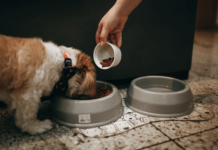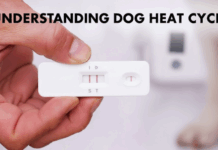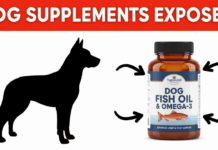Last Updated on October 31, 2023 by Dogs Vets
Dog Food – Can Humans really Eat Dog Food?
Dogs and humans have evolved together, unlike other species, both people and dogs can survive, if not flourish, on a wide variety of diets,. But when it comes to optimal nutrition, our needs are different. Dogs make their own vitamin C. Humans don’t.
Dogs and people require different amino acids. Humans have a more energy-efficient metabolism.
In times of an emergency or economic uncertainty, people often seek innovative ways to survive.
In the wake of food shortages or insufficient funds to purchase groceries, you may find yourself wondering if feeding your dog is a viable option to help you get out of trouble.
After all, if your dog likes leftover human food from time to time, perhaps the opposite can work as well.
This article looks at whether it’s safe for humans to eat dog food, including the risks to consider if you’re considering eating some puppy food.
Is dog food edible by humans in a Short-term?
Consumption of dog food in a short-term is unlikely to harm you…
Dog food is not intended for human consumption and is not held to the same production standards as human food, but a small amount is unlikely to cause serious harm.
Dog food is typically made from a combination of animal byproducts, grains, soy, vitamins, and minerals, creating a nutritionally balanced diet for your pet.
Animal byproducts frequently found in commercially prepared dog food include meat scraps, ground bones, skin, organs, and damaged animal parts deemed unfit for human consumption.

While these ingredients may not be palatable to most people, they are not technically dangerous to consume as long as they have been properly cooked, processed, and stored.
That said, the types of vitamins added to your dog’s food are a health concern.
Some varieties of dog food contain a synthetic form of vitamin K known as menadione or vitamin K3. Although it seems perfectly safe for your dog, research suggests that it is toxic to humans at high doses (1 Trusted Source).
The amount of menadione in commercial dog food tends to below, but it’s still not recommended for humans to consume it regularly or long-term. So, if you’re not sure if your dog food contains vitamin K3, contact the manufacturer for information.
Dogs and we humans have different nutritional needs
Although dog food is edible, it’s not a good idea to make it a regular part of your long-term diet.
Humans have different nutritional needs than dogs, and dog food doesn’t contain all the nutrients your body needs to stay healthy.
Take vitamin C, for example.
Vitamin C is an essential nutrient that is crucial for good skin health and immune function in humans. Humans cannot produce the vitamin and must get it from food.
On the other hand, dogs can make it in the liver, so there is no need to include it in their food (2 Trusted Source, 3 Trusted Source).
Therefore, if you rely on dog food as your main source of nutrition, you may run the risk of developing nutritional deficiencies over time.
SUMMARY – is dog food edible by humans?
Some nutrients in dog food are toxic to humans at high doses and the total nutrient composition is not adequate for humans.
Therefore, it should not be consumed routinely on a long-term basis.
Risk of eating dog food in Long Term
Eating dog food for a long time may increase the risk of developing foodborne illnesses
Just because you can eat dog food doesn’t mean you should. Dog food has its fair share of risks, especially when it comes to food safety.
Just like human food, dog food can be contaminated with bacteria that can make you sick.
Proper storage and handling of dog food are essential to ensure that it is as safe as possible to eat. Always follow the storage and handling guidelines listed on the package to ensure safety for you and your dog.
Some types of dog food are completely raw. It is not a good idea for humans to eat raw or undercooked meat, regardless of whether it is intended for dogs or humans.
Eating raw or undercooked meat has been linked to infections with harmful organisms, such as Salmonella, Listeria, Campylobacter, and E. coli. Symptoms can range from mild to severe and can include nausea, vomiting, intestinal cramps, and diarrhea (4 Trusted Source).
Although fully cooked dog food like kibble or canned wet food may be safer to eat than raw food, it could still make you sick. That’s because it can be inadvertently contaminated with harmful bacteria during processing, increasing your risk of developing a foodborne illness.
When contamination is detected, dog food products may be recalled. It is important to stay informed about any pet food recall so you can avoid accidentally exposing yourself or your pet to unsafe food.
In the United States, the Food and Drug Administration (FDA) maintains an online Reliable Source record of recalled commercial pet food products. You can use this data to make sure the dog food you buy is safe to consume (5 Trusted Source).
Eating dog food has greater risks for young children
Children are more susceptible to foodborne illnesses than adults because their immune systems are not fully developed. Therefore, it is not advisable to feed your children dog food (6 Trusted Source).
Another, often overlooked, risk of dog food is that it can be a choking hazard for young children.
View this post on Instagram
This is especially true of dry kibble, which can be difficult for young children to safely chew and swallow.
If you have a young child at home, be sure to keep the bag of kibble out of reach and keep an eye on it when it’s time for your dog to eat.
If your child accidentally consumes dog food, contact your pediatrician or local poison control authority for more information about steps you can take to ensure your child’s safety.
SUMMARY –
Dog food can cause illness because of bacterial contamination of the food, which could make you sick.
Children are at an increased risk of developing foodborne illnesses and should not consume dog food.
Will eating pet food kill me?
There is no official record of how many people dine on crunchy kibble or pasty canned pet food, but the act is probably as harmless as eating table scraps. Why?
Most pet food is composed of food that humans don’t digest, slaughterhouse leftovers such as organs, blood, and offal such as skin trimmings (an indigestible but harmless filler).
Many dry and wet dog foods also contain rice, wheat, and other plants, not to mention added vitamins and minerals.
But don’t snag a mouth-watering can of Alpo just yet: on March 16, 2007, the U.S. Food and Drug Administration issued a major recall on certain canned “cuts and gravy” pet foods that caused rapid kidney failure and death in hundreds and perhaps thousands of animals.
The FDA later recalled more animal edibles, tracing the problem to wheat gluten, a component used to thicken pet foods.
Scientists who tested the pet meals in question claim that an ingredient called melamine (a flame-retardant, plastic-producing chemical) is the cause of the deaths.
Although no one is sure why melamine is causing so many problems, it can cause kidney stones. The main components of kidney stones in rats that have eaten the pet food, says a federal document, are melamine and uric acid (also known as urea, the main component in urine).

Not surprisingly, the two are close, since melamine is often produced from urea. The melamine that made its way into pet foods sold in the United States came from a Chinese manufacturer of wheat gluten.
Because melamine “looks” like a protein when tested, adding it to pet food could deceptively increase protein levels – a major selling point for consumers. This, some argue, could be why it ended up in pet food.
So, if people are eating pet food these days, is it really safe? The jury is out in light of the pet food crisis, but sticking to food meant for humans for a while would be a wise choice.
Final Conclusion
Dog food is not designed for the unique nutritional needs of humans, although it is composed of ingredients that are technically safe for humans to eat. Therefore, it is not inherently toxic to humans and maybe safe in an emergency situation.
However, eating dog food can increase the risk of developing foodborne illnesses. Children are at an increased risk of developing complications related to foodborne illnesses and should not consume dog food.
In addition, dog food may contain vitamin K3 or menadione, which can be toxic to humans at higher doses.
All of the same food safety practices used in the handling and preparation of human food still apply to dog food.
It may be wise to keep track of any pet food recalls to ensure the highest level of safety, if you plan to eat it.
Attributes
Dogs and humans can highly benefit from bone broth, but it doesn’t necessarily mean that human food is suitable for dogs and vice versa. Your furry friends need special bone broth formula designed for them. So, what are the best bone broth products in the market today?
What are the amazing health benefits of kratom?
So it’s uncertain if kratom may be effective when taken to treat certain conditions. People in Asia, where kratom is grown, have used kratom for over a century.
Fact Check
We strive to provide the latest valuable information for pet lovers with accuracy and fairness. If you would like to add to this post or advertise with us, don’t hesitate to reach us. If you see something that doesn’t look right, contact us!
Reference : (Credit to www.livescience.com) and Healthline.com)

















